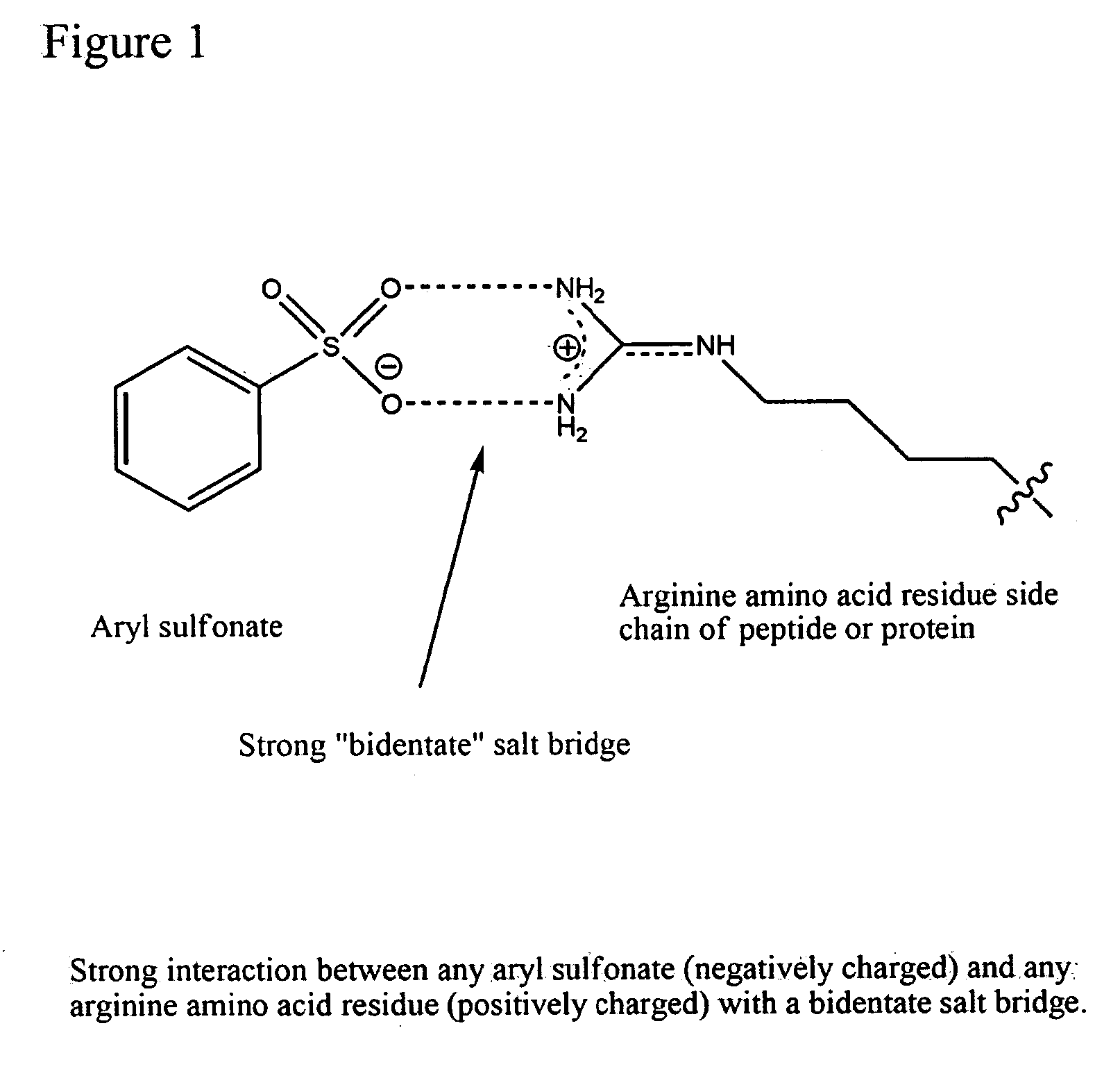Sulfonyl Cyanine Dyes and Derivatives
a technology of cyanine dye and cyanine dye, which is applied in the field of fluorescent cyanine dye compounds, can solve the problems of undesirable properties of fluorescent reporter molecules in the above applications, unfavorable biological system monitoring, and not the most convenient wavelength range with which to monitor biological systems
- Summary
- Abstract
- Description
- Claims
- Application Information
AI Technical Summary
Benefits of technology
Problems solved by technology
Method used
Image
Examples
example 1
[0017]Phenylhyrazine-4-sulfonic acid is commercially available from a number of fine chemical suppliers. 5 g of Phenylhyrazine-4-sulfonic acid was treated with 3-methyl-2-butanone (15 mL) in acetic acid (AcOH, 20 mL) and refluxed for 3 h. On cooling, 2,3,3-trimethylindolenine-5-sulfonic acid precipitated out and was filtered, washed with a little diethyl ether and dried.
[0018]The free base of was then formed by the addition of potassium hydroxide in 2-propanol. This was then refluxed with dimethylsulfate for 3 h to afford after removal of the solvent, the N-methyl compound. This was then treated with malonaldehyde bisphenylimine (0.3 equivalents) and refluxed in an acetic anhydride / pyridine mixture (4:1, 10 mL) for 1 h until a deep blue solution formed. The solvent was removed on a rotory evaporator and the crude dye was purified by flash chromatography on silica gel eluting with a gradient of methylene chloride and methanol (A=methylene chloride, B=methanol, gradient was 0 to 100% ...
example 2
Monofunctional and Bifunctional “Amino Reactive” Carboxylic Dye
[0019]
[0020]The bis amino dye from example 1 was treated with 50 mg with succinic anhydride (100 mg) and then purified by flash chromatography with a gradient of methylene chloride and methanol (A=methylene chloride, B=methanol, gradient was 0 to 100% B over 30 minutes) to afford 20 mg of compound the bis carboxylic dye. This compound could be activated to give a bifunctional NHS activated carboxyl dye by treatment with N-hydroxysuccinimide and a carbodiimide in the usual manner. It was also treated with methanol and dry HCl for 2 minutes at 5° C. to give the mono methyl ester / carboxylic acid dye (a monofunctional “amino-reactive” dye).
example 3
Preparation of a Monofunctional Amino and a Monofunctional Carboxyl Cyanide Dye
[0021]
[0022]The bis amino dye was treated with one half equivalent of succinic anhydride in DMF and then purified by HPLC chromatography to give the amino carboxylic acid dye above that can be used as a monofunctional amine dye or on protection of the amino group, a monofunctional carboxylic acid dye.
PUM
| Property | Measurement | Unit |
|---|---|---|
| absorption/emission wavelengths | aaaaa | aaaaa |
| wavelength | aaaaa | aaaaa |
| wavelength emission | aaaaa | aaaaa |
Abstract
Description
Claims
Application Information
 Login to View More
Login to View More - R&D
- Intellectual Property
- Life Sciences
- Materials
- Tech Scout
- Unparalleled Data Quality
- Higher Quality Content
- 60% Fewer Hallucinations
Browse by: Latest US Patents, China's latest patents, Technical Efficacy Thesaurus, Application Domain, Technology Topic, Popular Technical Reports.
© 2025 PatSnap. All rights reserved.Legal|Privacy policy|Modern Slavery Act Transparency Statement|Sitemap|About US| Contact US: help@patsnap.com



